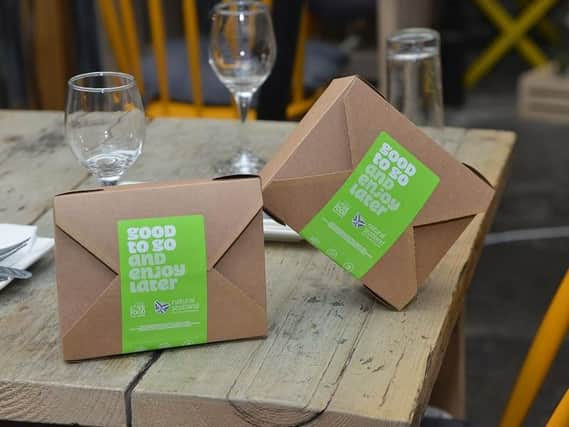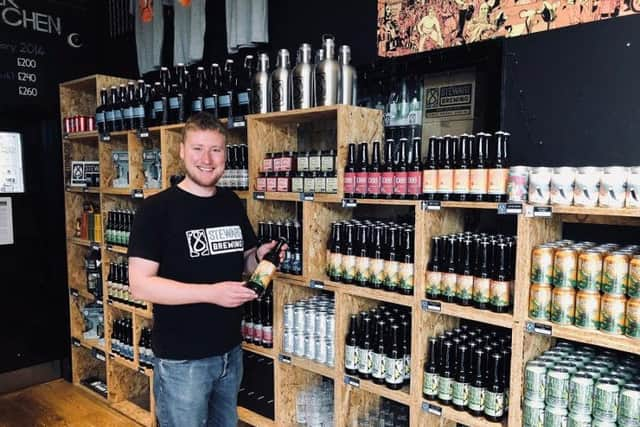Turning waste into green profits


Responsibility is a big concept. In the food and drink industry it can take many forms from animal welfare or ethical trading to healthy lifestyles or reducing waste.
Ambition 2030, the Scotland Food & Drink Partnership’s strategy for the sector, paints a vision of Scotland “recognised at home and abroad as a model of collaboration and a world leader in responsible profitable growth”.
One of the strategy’s key themes is recognising the need to do more with less, reducing our environmental impact and being ready for challenges around food waste, climate change and biodiversity.


“We can be part of a proactive solution to the challenges of sustainability,” says Iain Gulland, chief executive of Zero Waste Scotland.
His organisation has been helping Scottish businesses – in every sector – look at their resource use and find new ways to be more sustainable in their operations.
“Scotland is right at the forefront of exciting developments in the circular economy which aims to eradicate waste by keeping resources and products in use for as long as possible.
“Our support for the food and drink industry is through Resource Efficient Scotland (RES) which offers a comprehensive service to help an organisation implement a sustainable approach to resource use.”
Ambition 2030’s goals of sustainability are worthy ideals but they also make commercial sense, as James Withers, chief executive of Scotland Food & Drink, explains.
“The simplest reason why the whole issue of sustainability is now at the core of most businesses is the economics of it.
“We live in a world where we have increasingly finite resources, many of our raw materials are becoming much more expensive.
“So the financial case for being more sustainable is as strong as it has ever been.”
Withers adds: “Scotland is about selling the broader provenance story. We’re looking at a premium market and being able to demonstrate that we are world leading in terms of having a broader responsibility to the environment and our communities is critical.”
One area where the sector has seen a shift in attitude in the past decade is food waste.
In 2016, the Scottish Government set a target to reduce food waste by 33 per cent by 2025.
Using the baseline figure from 2013 of 1.35 million tonnes, this target was the first to be set by a nation in Europe.
Both businesses and households are now expected to separate food waste for collection, with businesses having to comply with Waste (Scotland) Regulations.
“We live in the western world that throws away something like one third of all products that are bought in supermarkets and shops and that are served in restaurants and hotels,” says Withers.
“That is just madness. It is a huge waste - particularly when you’ve got a farming industry working hard to produce raw materials and fishermen risking their lives to catch stock.
“Not to make best use of that is a moral breach, as much as a waste of energy and resources.”
Withers points to new ways of doing things. “There is an increasing awareness that innovation can be the solution to a lot of the food waste issues that we’ve had over the years.
“I see innovations where products might not traditionally be supermarket grade and we find smarter ways of doing things, for instance, turning veg into healthy snacks.”
There are also examples of what would once have been considered waste being used in innovative ways – from growers who send surplus crops to charities and food banks to the distilleries who supply grain from the distilling process as animal feed.
Finding new markets is not the only way to reduce waste and improve sustainability. There are plenty of examples of food and drink businesses tackling the waste agenda by looking at their own processes or introducing new technology.
Iain Gulland, chief executive of Zero Waste Scotland, points to Farne Salmon & Trout, the winner of the Environmental Sustainability category at this year’s Scotland Food & Drink Excellence Awards.
“Farne demonstrated significant all-round achievements in energy, water and material efficiency, which led to a reduction in the environmental impacts of its production and distribution,” explains Gulland.
The Berwickshire-based company turned around waste disposal costs of £13,000 in 2012 to a profit of £100,000 by segregating and baling waste to sell.
It also saved £1 million after investing in a filleting line which significantly reduces food waste in the processing of nearly 3 million salmon each year.
The company, which has 800 employees, set up green and sustainability teams to help deliver its vision and ultimately reduced waste to landfill from 60 per cent in 2014 to 2.9 per cent in 2017.
“It demonstrated a holistic approach to sustainability which reduces the environmental impacts associated with the manufacture and distribution of its products.”
Since 2013, Scottish businesses have been able to turn to Resource Efficient Scotland (RES) for advice and technical support to achieve this sort of result.
Zero Waste Scotland launched the RES programme to help small to medium sized businesses and organisations save money and energy by using resources more efficiently.
It is funded by the European Structural Funds Programme and the Scottish Government.
Support includes practical help to identify food and drink waste cost savings with a site-based audit and guides to best practice in specialised sectors such as brewing or distilling.
For restaurants, there are also Good to Go boxes. Designed to tackle “plate waste”, these “doggy bags” allow customers to take leftovers home at the end of a meal.
It has been estimated that one in every six meals served by Scottish restaurants is thrown away, costing the hospitality industry £64 million annually.
Although doggy bags have been used in the past, concerns around food safety had not always been tackled. The Good to Go scheme addresses this by featuring on its boxes guidance on reheating and eating restaurant leftovers at home.
The boxes are made from sustainable cardboard with a natural starch lining and so are fully compostable.
This focus on the out-of-home market is welcomed by Withers: “The amount of money spent on eating and drinking out of the home is about £85 billion in value across the UK and that is rising.
“So that focus on how we can reduce food waste in hotels, restaurants, bars, sporting venues and tourist attractions is really important.”
He adds: “Zero Waste Scotland has built up a good reputation of working with the food and drinks sector.
“There are a lot of good examples where companies have done work with Zero Waste Scotland around food waste and they are saving money as well as increasing their sustainability credentials and sustainability performance.
“We work in a business that is generally about tight margins in a hugely competitive marketplace so if we can reduce waste and add value to products we might once have considered as waste, we will be a better place.”
Stewart Brewing
One of those to benefit from the support of Resource Efficient Scotland (RES) was Stewart Brewing at Loanhead in Midlothian.
The brewer was seeing beer losses of 10 per cent from draining excess yeast in the traditional way.
An RES assessment of its processes recommended the addition of a centrifuge which would reduce beer losses to 5 per cent.
Stewart Brewing installed the centrifuge in April and already the impact can be seen. “It increases our efficiency,” says Craig Scotland, the head brewer, pictured left.
“We’re getting more beer out of the tanks and less going down the drain. It means the beer is ready quicker which allows us to turn round the tanks quicker,” he adds.
Funding from RES’s Waste Prevention Fund helped finance the purchase of the centrifuge.
“Installing the centrifuge enabled us to minimise our yeast and hop disposal and facilitated an increase in our beer production,” explains Steve Stewart, managing director of Stewart Brewing.
“It was great to get some expertise from Resource Efficient Scotland to review our data and convince us that this was the right thing to do.”
Too good to waste
- An estimated 1.35 million tonnes of food and drink in Scotland was wasted in 2013.
- The cost of food waste to the Scottish hospitality sector is estimated at £64 million a year.
- Food waste disposed of by the Scottish hospitality sector is estimated at 53,500 tonnes annually, two-thirds of which could have been eaten.
- If the avoidable food waste was prevented and the unavoidable food waste recycled, Scotland could save 150,000 tonnes of CO2 equivalent emissions, the same as taking almost 50,000 cars off the road for one year.
- Good to Go pilot showed that if restaurants across Scotland routinely offered doggy bags, it could save the equivalent of 800,000 full meals going in the bin every year.
- Resource Efficient Scotland (RES) offers guidance, resources and personal support on reducing food waste for businesses in hospitality, retail, or food and drink production.
- Zero Waste Scotland is delivering Circular Economy Hotspot Scotland on 30 October to 1 November, in partnership with Circular Glasgow (an initiative of Glasgow Chamber of Commerce). It is backed by the Scottish Government and the European Regional Development Fund.
- The hotspot will feature six sector-specific streams including food and drink in partnership with Scotland Food & Drink. There will be site visits and briefings from key business partners.
Contact Resource Efficient Scotland on 0808 808 2268.
www.resourceefficientscotland.org.uk Register for Circular Economy Hotspot Scotland at www.circulareconomyhotspot.scot/registerFor more information, visit www.zerowastescotland.orgThis article is taken from The Scotsman's Annual Food & Drink Supplement which can be read in full here